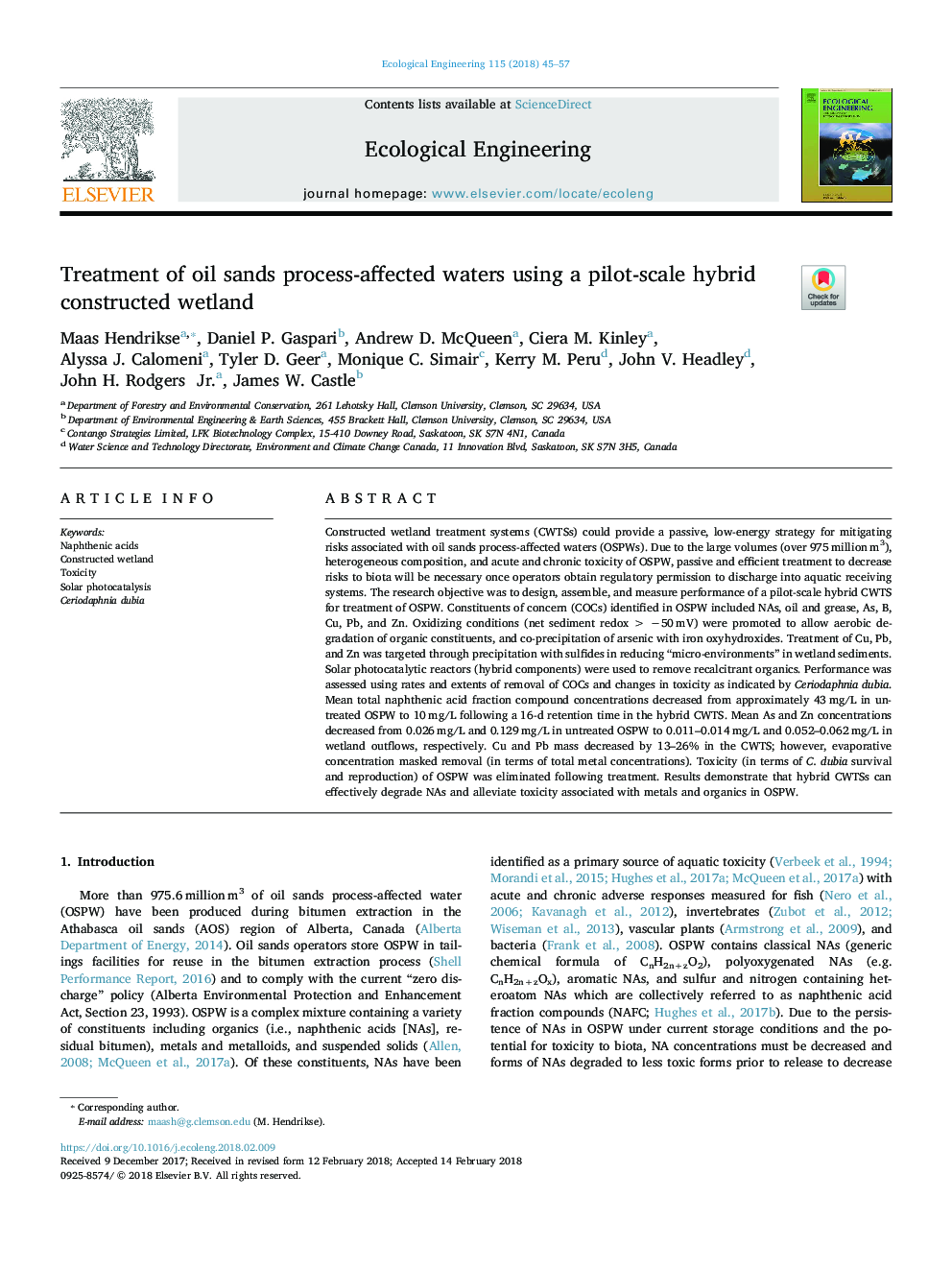| کد مقاله | کد نشریه | سال انتشار | مقاله انگلیسی | نسخه تمام متن |
|---|---|---|---|---|
| 8847946 | 1617987 | 2018 | 13 صفحه PDF | دانلود رایگان |
عنوان انگلیسی مقاله ISI
Treatment of oil sands process-affected waters using a pilot-scale hybrid constructed wetland
ترجمه فارسی عنوان
درمان ماسه های نفتی آب های تحت تأثیر فرآیند با استفاده از یک تالاب ساخته شده با ترکیبی در آزمایشگاه
دانلود مقاله + سفارش ترجمه
دانلود مقاله ISI انگلیسی
رایگان برای ایرانیان
کلمات کلیدی
موضوعات مرتبط
علوم زیستی و بیوفناوری
علوم کشاورزی و بیولوژیک
بوم شناسی، تکامل، رفتار و سامانه شناسی
چکیده انگلیسی
Constructed wetland treatment systems (CWTSs) could provide a passive, low-energy strategy for mitigating risks associated with oil sands process-affected waters (OSPWs). Due to the large volumes (over 975â¯millionâ¯m3), heterogeneous composition, and acute and chronic toxicity of OSPW, passive and efficient treatment to decrease risks to biota will be necessary once operators obtain regulatory permission to discharge into aquatic receiving systems. The research objective was to design, assemble, and measure performance of a pilot-scale hybrid CWTS for treatment of OSPW. Constituents of concern (COCs) identified in OSPW included NAs, oil and grease, As, B, Cu, Pb, and Zn. Oxidizing conditions (net sediment redoxâ¯>â¯â50â¯mV) were promoted to allow aerobic degradation of organic constituents, and co-precipitation of arsenic with iron oxyhydroxides. Treatment of Cu, Pb, and Zn was targeted through precipitation with sulfides in reducing “micro-environments” in wetland sediments. Solar photocatalytic reactors (hybrid components) were used to remove recalcitrant organics. Performance was assessed using rates and extents of removal of COCs and changes in toxicity as indicated by Ceriodaphnia dubia. Mean total naphthenic acid fraction compound concentrations decreased from approximately 43â¯mg/L in untreated OSPW to 10â¯mg/L following a 16-d retention time in the hybrid CWTS. Mean As and Zn concentrations decreased from 0.026â¯mg/L and 0.129â¯mg/L in untreated OSPW to 0.011-0.014â¯mg/L and 0.052-0.062â¯mg/L in wetland outflows, respectively. Cu and Pb mass decreased by 13-26% in the CWTS; however, evaporative concentration masked removal (in terms of total metal concentrations). Toxicity (in terms of C. dubia survival and reproduction) of OSPW was eliminated following treatment. Results demonstrate that hybrid CWTSs can effectively degrade NAs and alleviate toxicity associated with metals and organics in OSPW.
ناشر
Database: Elsevier - ScienceDirect (ساینس دایرکت)
Journal: Ecological Engineering - Volume 115, May 2018, Pages 45-57
Journal: Ecological Engineering - Volume 115, May 2018, Pages 45-57
نویسندگان
Maas Hendrikse, Daniel P. Gaspari, Andrew D. McQueen, Ciera M. Kinley, Alyssa J. Calomeni, Tyler D. Geer, Monique C. Simair, Kerry M. Peru, John V. Headley, John H. Jr., James W. Castle,
